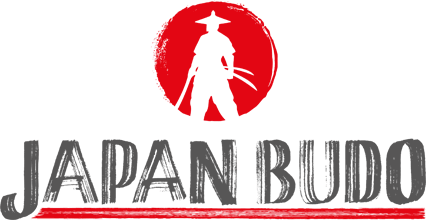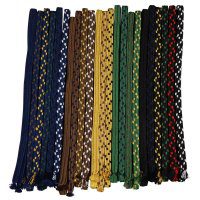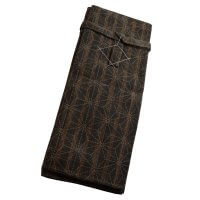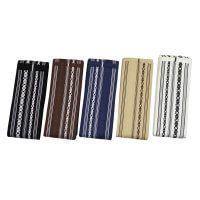The importance of certificates in the Nihonto world
Origin of the sword classification of historical swords from Japan
The grading of swords has a centuries-old tradition in Japan, just like sword making itself. Most daimyo in Japanese history sought advice from experts when putting together their impressive sword collections.
This role was usually taken on by people who were involved in polishing swords, as these people had worked on many swords and therefore knew the characteristics of the different smiths and schools. The Hon'ami family was particularly well known in this field.
Sword assessment and Nihonto certificates in recent history
Regardless of the existing tradition, there was an important point in recent Japanese history when the appraisal of swords reached national significance.
At the end of the Second World War, Japan was occupied by the USA and all weapons in the country were confiscated. Some historically relevant nihonto were also destroyed in the process. The best known is probably the story of the Honjo Masamune, which is said to have been the best Japanese sword of all time. This sword disappeared in the course of the confiscation of weapons and never reappeared.
Over time, it became clear that experts were urgently needed to categorise the confiscated swords according to whether they were historically relevant or not.
These were the beginnings of the first official and institutionalised sword testing companies.
This also gave rise to today's most influential organisation, the NBTHK.
Types of Nihonto certificates at the Nihonto in our shop
NBTHK certificates from Hozon to Tokubetsu Juyo
Today, the NBTHK is by far the most influential institution in the field of Japanese swords. It influences the entire market, from co-operation with current swordsmiths, to the classification of historical swords, to the trade in swords, as some senior members are themselves sword dealers.
In addition to this influence, the NBTH is also by far the largest sponsor by supporting young talents, organising forging competitions and running its own sword museum.
With regard to certificates, also known as origami or simply papers, the NBTHK is regarded as the leading provider for the assessment and certification of swords.
Over the decades, there were also periods in which the papers were not considered particularly reliable. Today, however, they are without question the most reliable source and can therefore often be found in connection with swords.
There are gradations depending on the assessment of the sword in question. The current grading system is structured as follows. The entry level is called Hozon, followed by Tokubetsu and Juyo, above which is the classification Tokubetsu Juyo.
An esteemed colleague has explained these papers and many others very well and listed them in a comprehensible manner. We have nothing to add to this list and therefore simply link to it here: http://www.shibuiswords.com/papers1.htm
The information about the NBTHK papers can be found in the article under the heading "NIHON BIJUTSU TOKEN HOZON KAI". This is the full name of the NBTHK.
JHTKK (JTK) Origami for Japanese Katana
In addition to the NBTHK certificates, our swords also include JHTKK (JTK) certificates. The JHTTK was founded following disputes within the NBTHK.
The documents of the JHTTK have slightly different centres of gravity than those of the NBTHK. They are more comprehensive and also go into more detail about the blade being assessed.
The JHTKK issues blue and brown origami (certificates). The brown origami are only awarded according to strict criteria and are perhaps similar in intention to Tokubetsu Hozon or Juyo. But due to the different focus of the two institutions, it is not possible to equate the papers!
If the offered sword is accompanied by NBTHK or JHTKK papers, this is always mentioned in the description of the sword.
How reliable are Nihonto certificates?
All certificates are not to be understood as the absolute truth without an assessment of alternatives. There are sometimes different opinions between two people who judge the same sword, even within the same institution. Discrepancies are therefore possible, especially when relying on different sources. If a sword was tested by a particularly well-known person, we usually also write who the tester of the sword was.
Sometimes we ourselves come to a different conclusion than the facts in the certificates. This is in no way meant to imply that we want to put ourselves on an equal footing with these exceptional institutions or even value our own knowledge more highly!
In such cases, there is usually historical literature in which the sword is categorised differently by a reliable source. For the sake of completeness, we then add that different opinions exist.





